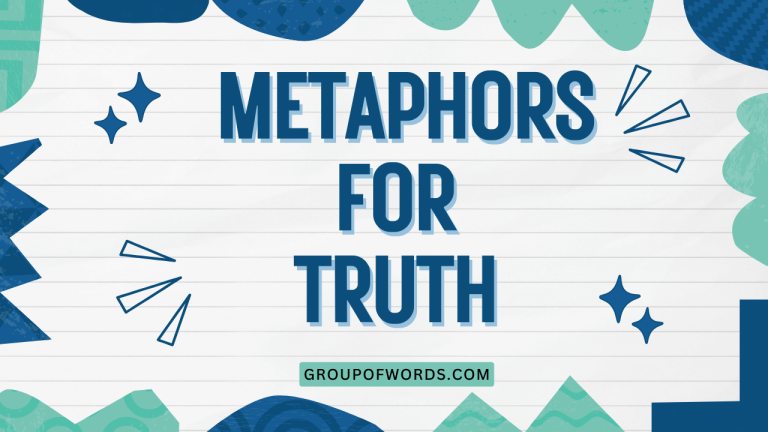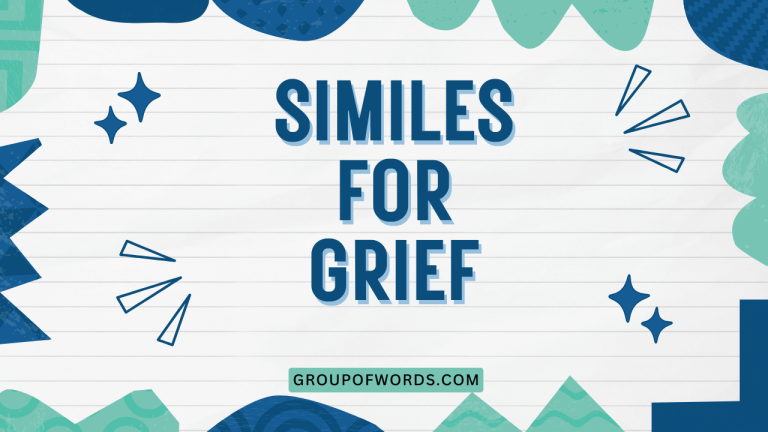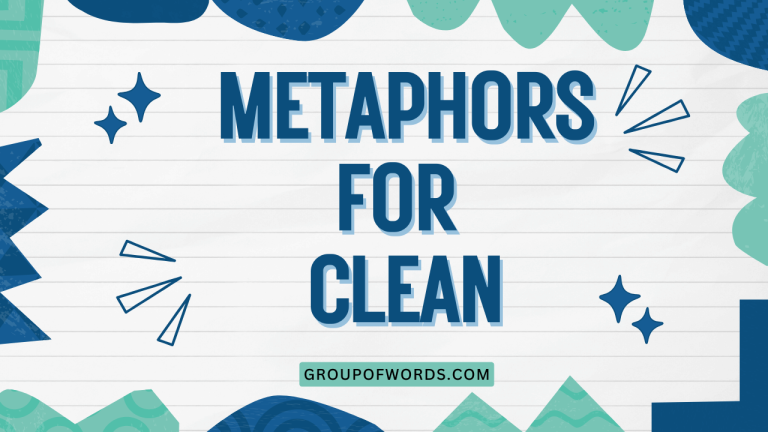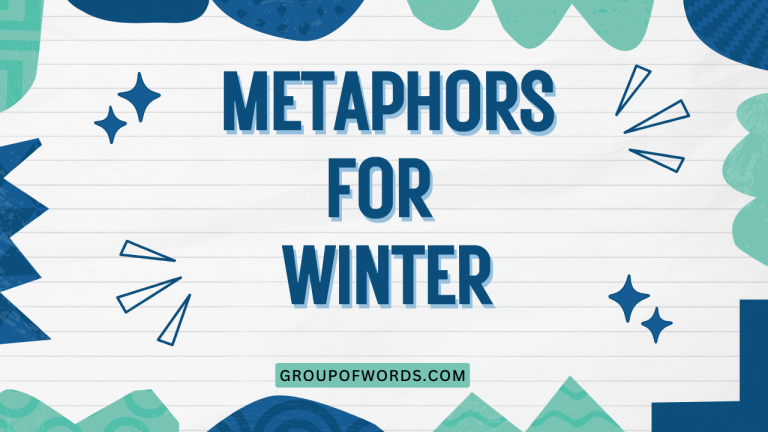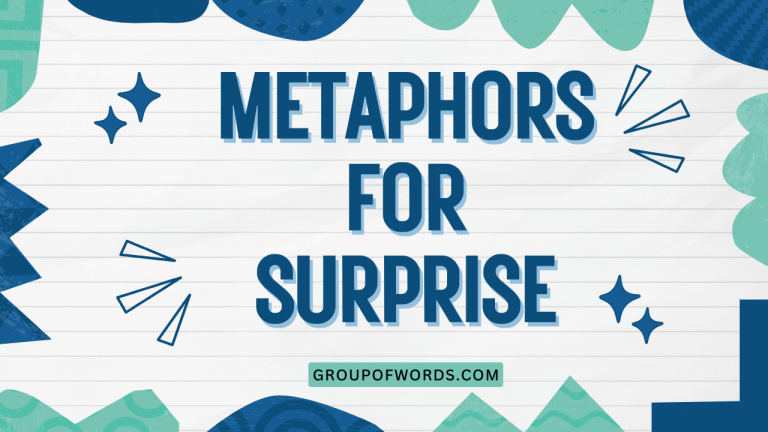Similes for Freedom: A Comprehensive Guide
Understanding similes is crucial for mastering figurative language and enhancing your writing skills. Similes, a type of metaphor, allow us to make vivid comparisons, bringing abstract concepts like freedom to life.
This article provides a detailed exploration of similes for freedom, covering their definition, structure, types, and usage, along with numerous examples and practice exercises. Whether you’re an English language learner, a student studying literature, or simply someone who wants to improve their writing, this guide will equip you with the knowledge and skills to effectively use similes to express the idea of freedom.
Table of Contents
- Introduction
- Definition of Simile
- Structural Breakdown of Similes
- Types of Similes
- Examples of Similes for Freedom
- Usage Rules for Similes
- Common Mistakes with Similes
- Practice Exercises
- Advanced Topics: Nuances of Simile Use
- Frequently Asked Questions
- Conclusion
Definition of Simile
A simile is a figure of speech that directly compares two different things using the words “like” or “as.” Its primary function is to create a vivid image or emphasize a particular quality by associating it with something familiar. Unlike a metaphor, which implies a direct equivalence (“He is a lion”), a simile acknowledges that the two things being compared are distinct, yet share a common characteristic (“He is brave like a lion”).
Similes are essential for adding color and depth to writing. They help to clarify complex ideas by relating them to simpler concepts.
In the context of “freedom,” similes can be used to express the feeling of liberation, the absence of constraints, or the ability to act without restriction. For example, “Free as a bird” evokes the image of unrestricted flight and movement.
Similes can be classified based on the type of comparison they make. Some similes focus on physical attributes, while others emphasize emotional states or abstract qualities.
Understanding these classifications can help you choose the most effective simile for your intended meaning.
Structural Breakdown of Similes
The basic structure of a simile consists of three main components: the subject being described, the word “like” or “as,” and the object to which the subject is being compared. This structure provides a clear and direct comparison.
Subject + “like” or “as” + Object of Comparison
For example, in the simile “Freedom is like a vast ocean,” “freedom” is the subject, “like” is the connecting word, and “a vast ocean” is the object of comparison. The simile suggests that freedom, in its expansiveness and limitlessness, resembles a vast ocean.
The object of comparison is crucial for creating the desired effect. It should be something that the reader can easily visualize or understand.
The more relatable and vivid the object of comparison, the more effective the simile will be.
The choice between “like” and “as” is often a matter of style. “Like” is more commonly used in informal writing, while “as” can lend a more formal tone.
However, both words serve the same purpose of drawing a comparison.
Types of Similes
Similes can be categorized based on the type of comparison they make. Understanding these categories can help you choose the most appropriate simile for your writing.
Descriptive Similes
Descriptive similes focus on physical attributes or observable characteristics. They help to create a vivid image in the reader’s mind.
For example, “Freedom felt as light as a feather” describes the feeling of freedom in terms of its weight.
Emotional Similes
Emotional similes compare emotions or feelings. They help to convey the intensity or nature of an emotion by relating it to something more tangible.
For example, “Freedom was like a weight lifted from her shoulders” describes the emotional relief associated with freedom.
Abstract Similes
Abstract similes compare abstract concepts or ideas. They help to clarify complex or intangible notions by relating them to something more concrete.
For example, “Freedom is like a blank canvas” suggests that freedom offers limitless possibilities.
Action Similes
Action similes compare actions or behaviors. They vividly illustrate how something is done, often emphasizing speed, efficiency, or grace.
An example would be: “He ran towards freedom like a deer fleeing a hunter.”
Similes of State
Similes of state describe a condition or situation. They help to create a clear understanding of the current status of something.
For example, “The country was as free as a newborn nation after the revolution.”
Examples of Similes for Freedom
Here are several examples of similes for freedom, categorized by the type of comparison they make. Each table provides a range of similes to illustrate the different ways in which freedom can be expressed.
Descriptive Similes Examples
The following table presents descriptive similes, focusing on the physical or observable aspects of freedom.
| Simile | Explanation |
|---|---|
| Freedom is as boundless as the sky. | Emphasizes the unlimited nature of freedom. |
| Freedom felt like a wide-open space. | Suggests the absence of confinement. |
| Freedom shines as bright as the sun. | Highlights the radiant and positive aspect of freedom. |
| His spirit was as free as the wind. | Implies unrestricted movement and independence. |
| She felt as liberated as a bird released from its cage. | Depicts the experience of being freed from captivity. |
| The air of freedom was like a breath of fresh air. | Compares freedom to something revitalizing. |
| Freedom is as vast as the ocean. | Illustrates the immense scope and depth of freedom. |
| Her laughter was as free as a flowing river. | Connects freedom to unrestrained joy and expression. |
| The land was as open as a prairie, free from fences. | Presents a visual of unrestricted access. |
| His mind was as clear as a cloudless sky, now that he was free. | Relates freedom to mental clarity. |
| Their future was as unwritten as a blank page, full of freedom. | Shows the potential and openness of a free future. |
| The feeling of freedom was as light as a feather. | Describes freedom as feeling weightless and effortless. |
| The city after the war was as free as a blank slate, ready to be rebuilt. | Compares post-war freedom to a chance for renewal. |
| The music was as free as a jazz solo, improvisational and unbound. | Relates freedom to artistic expression without constraints. |
| Their movements were as fluid as water, now that they were free. | Implies ease and grace in action due to freedom. |
| The children ran as free as wild horses across the fields. | Presents an image of unrestrained youthful energy. |
| His voice was as free as a songbird’s, expressing joy and liberation. | Connects freedom to the ability to express oneself. |
| The marketplace was as bustling and free as a festival, full of life. | Relates freedom to a vibrant and active environment. |
| The opportunity to choose felt as liberating as shedding heavy armor. | Suggests a release from burdens and restrictions. |
| Their conversation flowed as freely as a mountain stream, unburdened by censorship. | Compares freedom to open and unrestricted communication. |
| The path ahead was as open and inviting as a sunlit road. | Shows the positive and promising aspects of freedom. |
| The feeling of relief was as tangible as the first rain after a drought. | Links freedom to the satisfaction of a long-awaited relief. |
| Her dance was as free-spirited as a leaf dancing in the wind. | Relates freedom to natural, unrestrained expression. |
| Their ideas spread as freely as seeds carried by the wind. | Implies that freedom allows for the unrestricted dissemination of thought. |
Emotional Similes Examples
This table focuses on emotional similes, comparing the feelings associated with freedom to other emotions or experiences.
| Simile | Explanation |
|---|---|
| Freedom felt like a weight lifted off her shoulders. | Indicates relief and release from burden. |
| Freedom was like a warm embrace after a long journey. | Suggests comfort and welcoming relief. |
| Freedom tasted as sweet as victory. | Compares the feeling of freedom to the satisfaction of winning. |
| Freedom rang as loudly as a joyful bell. | Implies a strong, resounding sense of happiness. |
| His heart soared like a bird, now that he was free. | Shows the elation and exhilaration of freedom. |
| The joy of freedom was like sunshine after a storm. | Compares freedom to a positive change after hardship. |
| The relief was as palpable as a cool breeze on a hot day. | Describes freedom as a tangible and welcome relief. |
| Freedom was like a breath of life after being suffocated. | Suggests revitalization and renewal. |
| The feeling of liberation was as intense as falling in love. | Relates freedom to a powerful and passionate emotion. |
| Her spirit felt as light as air, now that she had freedom. | Indicates a sense of lightness and ease. |
| The hope of freedom burned as brightly as a guiding star. | Compares freedom to a source of guidance and inspiration. |
| The anticipation of freedom felt as thrilling as a roller coaster ride. | Suggests excitement and exhilaration. |
| The promise of freedom was like a beacon in the night, guiding them. | Compares freedom to a source of hope and direction. |
| Their determination for freedom was as unyielding as a mountain. | Shows the strength and steadfastness of their desire. |
| The impact of freedom was as profound as a spiritual awakening. | Relates freedom to a transformative experience. |
| The sense of empowerment felt as invigorating as a morning run. | Compares freedom to a source of energy and strength. |
| The collective joy was as contagious as a wildfire, spreading rapidly. | Indicates the widespread and infectious nature of happiness. |
| The strength they found in freedom was as surprising as finding water in the desert. | Relates freedom to an unexpected but vital resource. |
| The gratitude for freedom was as deep as the ocean. | Suggests a profound and immeasurable sense of thankfulness. |
| The sense of belonging they found in freedom was as comforting as a warm blanket. | Compares freedom to a feeling of security and comfort. |
| Their resilience in fighting for freedom was as unwavering as the tides. | Shows the constant and persistent effort towards achieving freedom. |
| The community’s spirit was as unified as a choir, all singing the same song of freedom. | Relates freedom to a sense of collective harmony and purpose. |
| The feeling of possibility was as vast as the universe, now that they were free. | Suggests limitless potential and opportunities. |
| Freedom tasted as rich and satisfying as a long-awaited feast. | Compares freedom to a deeply gratifying experience. |
Abstract Similes Examples
This table presents abstract similes, comparing the concept of freedom to other abstract ideas or concepts.
| Simile | Explanation |
|---|---|
| Freedom is like a blank canvas. | Suggests limitless possibilities and the ability to create. |
| Freedom is as valuable as time. | Emphasizes the importance and preciousness of freedom. |
| Freedom is like a double-edged sword. | Implies that freedom can bring both benefits and responsibilities. |
| Freedom is as essential as air. | Highlights the fundamental necessity of freedom for survival. |
| Freedom is like a seed that needs nurturing. | Suggests that freedom requires care and protection to flourish. |
| Freedom is as challenging as climbing a mountain. | Compares freedom to a difficult but rewarding endeavor. |
| Freedom is like a flowing river, constantly changing. | Suggests that freedom is dynamic and ever-evolving. |
| Freedom is as fragile as glass. | Implies that freedom can be easily broken or lost. |
| Freedom is like a muscle that grows stronger with use. | Shows that exercising freedom strengthens its presence. |
| Freedom is as complex as a spiderweb. | Relates freedom to intricate and interconnected systems. |
| Freedom is like a dance, requiring balance and coordination. | Suggests that freedom involves responsibility and skill. |
| Freedom is as elusive as a dream. | Implies that freedom can be difficult to grasp or maintain. |
| Freedom is like a journey, full of unexpected turns. | Compares freedom to a path with uncertainties and discoveries. |
| Freedom is as empowering as knowledge. | Relates freedom to the ability to make informed choices. |
| Freedom is like a symphony, requiring harmony and cooperation. | Suggests that freedom involves collective effort and agreement. |
| Freedom is as precious as gold. | Highlights the great value and desirability of freedom. |
| Freedom is like a garden, requiring constant tending. | Suggests that freedom needs ongoing effort and maintenance. |
| Freedom is as vital as water to a plant. | Compares freedom to a life-sustaining element. |
| Freedom is like a lighthouse, guiding ships through the storm. | Suggests that freedom provides direction and safety. |
| Freedom is as liberating as truth. | Relates freedom to honesty and transparency. |
| Freedom is like a map, guiding us to new possibilities. | Compares freedom to a tool for exploration and discovery. |
| Freedom is as enriching as education. | Relates freedom to the ability to learn and grow. |
| Freedom is like a vibrant city, full of diversity and opportunity. | Suggests that freedom promotes variety and progress. |
| Freedom is as transformative as a butterfly emerging from its chrysalis. | Compares freedom to a process of profound change and growth. |
Usage Rules for Similes
Using similes effectively requires adherence to certain rules and guidelines. These rules ensure that the simile is clear, relevant, and impactful.
Relevance: The object of comparison should be relevant to the subject being described. The shared characteristic should be clear and logical. For example, comparing freedom to a heavy chain would be illogical, as it contradicts the idea of liberation.
Clarity: The simile should be easy to understand. Avoid using obscure or overly complex comparisons that may confuse the reader. A simple and direct comparison is often more effective.
Originality: While common similes can be effective, strive for originality to make your writing more engaging. Overused similes, such as “free as a bird,” can lose their impact. Try to create fresh and unique comparisons.
Consistency: Ensure that the simile aligns with the overall tone and style of your writing. A formal piece may require more sophisticated similes, while an informal piece can accommodate simpler comparisons.
Context: Consider the context in which the simile is used. The meaning and impact of a simile can change depending on the surrounding text. Make sure the simile complements and enhances the overall message.
Common Mistakes with Similes
Several common mistakes can diminish the effectiveness of similes. Being aware of these mistakes can help you avoid them and improve your writing.
Mixing Metaphors and Similes: Confusing metaphors and similes can lead to unclear or nonsensical comparisons. Remember that a simile uses “like” or “as,” while a metaphor implies a direct equivalence.
Overusing Similes: Using too many similes in a short space can make your writing feel cluttered and distracting. Use similes sparingly and strategically to maximize their impact.
Clichés: Relying on overused cliches, such as “free as a bird,” can make your writing sound unoriginal and uninspired. Strive for fresh and unique comparisons.
Illogical Comparisons: Making comparisons that don’t make sense can confuse the reader and undermine your message. Ensure that the shared characteristic between the subject and object of comparison is clear and logical.
Incorrect Examples:
| Incorrect | Correct | Explanation |
|---|---|---|
| Freedom is a bird. | Freedom is like a bird. | The first sentence is a metaphor, not a simile. |
| He felt freedom. | He felt as light as freedom. | The first sentence lacks a comparison. |
| Freedom is heavy like a stone. | Freedom is liberating like a cool breeze. | The comparison is illogical and contradicts the concept of freedom. |
Practice Exercises
These exercises will help you practice using similes for freedom. Each exercise includes a set of questions and their corresponding answers.
Exercise 1: Identifying Similes
Identify the similes in the following sentences:
| Question | Answer |
|---|---|
| 1. Her spirit was as free as the wind. | as free as the wind |
| 2. Freedom is a vast ocean of possibilities. | (This is a metaphor, not a simile) |
| 3. He felt like a bird released from its cage. | like a bird released from its cage |
| 4. The city was free after the war. | (No simile present) |
| 5. Their laughter was as free as a flowing river. | as free as a flowing river |
| 6. The feeling of liberation was like a warm embrace. | like a warm embrace |
| 7. Freedom is precious. | (No simile present) |
| 8. The country was as free as a newborn nation. | as free as a newborn nation |
| 9. His mind was clear as a cloudless sky. | as clear as a cloudless sky |
| 10. Freedom is like a blank page. | like a blank page |
Exercise 2: Completing Similes
Complete the following similes with an appropriate comparison:
| Question | Answer |
|---|---|
| 1. Freedom felt as light as _____. | a feather |
| 2. His heart soared like _____. | a bird |
| 3. Freedom is as valuable as _____. | time |
| 4. The air of freedom was like _____. | a breath of fresh air |
| 5. The promise of freedom was like _____. | a beacon in the night |
| 6. Their determination was as unyielding as _____. | a mountain |
| 7. Freedom is like _____. | a blank canvas |
| 8. He ran as fast as _____. | the wind |
| 9. The feeling of relief was as tangible as _____. | the first rain after a drought |
| 10. The opportunity to choose felt as liberating as _____. | shedding heavy armor |
Exercise 3: Writing Similes
Write your own similes for freedom based on the following prompts:
| Prompt | Example Answer |
|---|---|
| 1. Describe the feeling of freedom after overcoming a challenge. | The feeling of freedom after overcoming the challenge was like reaching the summit of a mountain after a long climb. |
| 2. Compare the importance of freedom to something essential. | Freedom is as essential as water to a plant, without it, life cannot flourish. |
| 3. Describe the sound of freedom. | The sound of freedom was like the joyful ringing of church bells on a Sunday morning. |
| 4. Compare freedom to a journey. | Freedom is like a journey without a map, full of unexpected twists and turns. |
| 5. Describe the appearance of a place where people are truly free. | A place where people are truly free looks as vibrant and diverse as a blooming meadow in spring. |
| 6. Compare the spread of freedom to something that expands. | The spread of freedom is like the ripples in a pond when a stone is thrown in. |
| 7. Describe the taste of freedom. | The taste of freedom is as sweet as a long-awaited victory. |
| 8. Compare the responsibility that comes with freedom to something that requires care. | The responsibility that comes with freedom is like tending a garden; it requires constant care and attention. |
| 9. Describe the weight of oppression versus the lightness of freedom. | Oppression felt as heavy as chains, while freedom felt as light as a feather. |
| 10. Compare the potential of freedom to something limitless. | The potential of freedom is as limitless as the stars in the night sky. |
Advanced Topics: Nuances of Simile Use
For advanced learners, understanding the nuances of simile use can elevate your writing to a higher level. This includes recognizing the cultural context of similes and using them to create subtle effects.
Cultural Context: Similes can be culturally specific. A simile that resonates with one culture may not have the same impact in another. Being aware of cultural differences can help you avoid misunderstandings and create more effective comparisons.
Subtlety: Similes can be used subtly to create a nuanced effect. A well-crafted simile can enhance the meaning of a sentence without being overly obvious or heavy-handed.
Irony and Sarcasm: Similes can be used ironically or sarcastically to convey a meaning that is the opposite of what is literally stated. This can add layers of complexity and humor to your writing.
Extended Similes: An extended simile is a simile that is developed over several sentences or paragraphs. This allows for a more detailed and elaborate comparison, creating a richer and more immersive experience for the reader.
Frequently Asked Questions
Here are some frequently asked questions about similes for freedom:
Q1: What is the difference between a simile and a metaphor?
A1: A simile compares two things using “like” or “as,” while a metaphor implies a direct equivalence without using these words. For example, “Freedom is like a bird” is a simile, while “Freedom is a bird” is a metaphor.
Q2: Why are similes important in writing?
A2: Similes add color, depth, and clarity to writing. They help to create vivid images, emphasize particular qualities, and clarify complex ideas by relating them to simpler concepts.
Q3: How can I make my similes more original?
A3: Avoid using overused cliches and strive for fresh and unique comparisons. Think about the specific qualities you want to emphasize and find objects of comparison that are both relevant and unexpected.
Q4: Can a simile be too complex?
A4: Yes, a simile can be too complex if it is difficult to understand or if the object of comparison is obscure. A simple and direct comparison is often more effective.
Q5: What should I do if I can’t think of a good simile?
A5: Consider brainstorming different qualities or characteristics of the subject you want to describe. Then, think about objects or concepts that share those qualities.
Don’t be afraid to experiment and try out different comparisons.
Q6: Is it okay to use the same simile more than once?
A6: While it’s generally best to vary your similes, using the same simile more than once can be effective if it is used strategically to create a recurring motif or theme.
Q7: How do I know if a simile is effective?
A7: An effective simile is clear, relevant, and impactful. It should enhance the meaning of the sentence and create a vivid image in the reader’s mind.
Ask yourself if the comparison makes sense and if it adds value to your writing.
Q8: Can similes be used in all types of writing?
A8: Yes, similes can be used in all types of writing, from creative writing to academic essays. However, the tone and style of the simile should be appropriate for the context.
Conclusion
Mastering the use of similes, particularly in the context of freedom, can significantly enhance your writing and communication skills. By understanding the structure, types, and usage rules of similes, you can create vivid and impactful comparisons that bring the concept of freedom to life.
Remember to be creative, original, and mindful of the context in which you use similes.
Continue practicing with different examples and exercises to refine your skills. The more you experiment with similes, the more confident and effective you will become in using them to express complex ideas and emotions.
Strive to create fresh and unique comparisons that resonate with your audience and elevate your writing to a higher level. Embrace the power of figurative language and let your words soar as freely as the ideas they convey.

